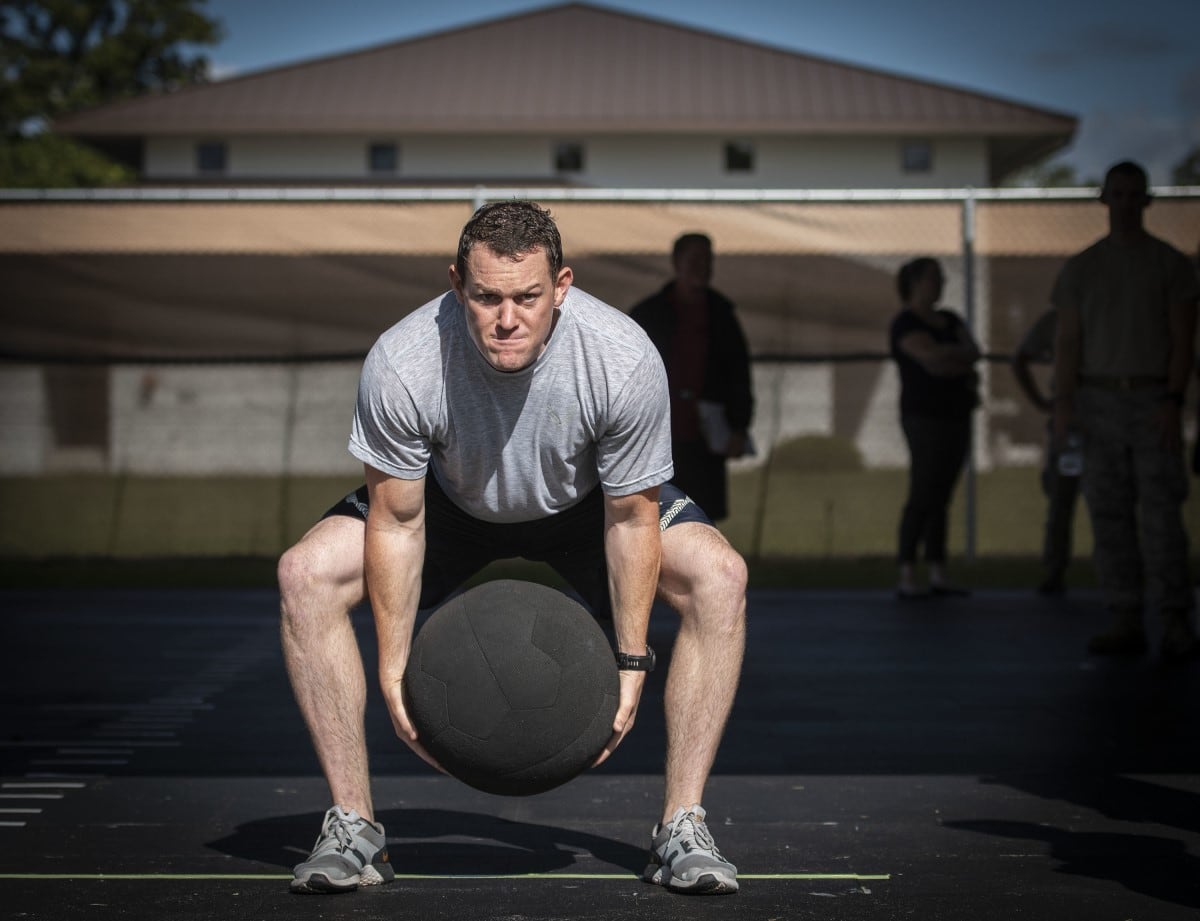Job-specific PT tests are coming to 10 career fields in the Air Force over the next two years. They’ll be tough — and will be very different from what you’ve had to do before to pass your fitness test.
These so-called Tier 2 tests are designed to be gender-neutral, and emulate specific physical challenges airmen will regularly face when doing their jobs in the field. If an airman can do these demanding Tier 2 exercises, he or she will be able to do everything necessary in battle or in the field.
For most career fields in line to get Tier 2 tests, the standards aren’t yet set or finalized. But the first glimpses of what would go into these standards, which the Air Force released last year for the tactical air control party, air liaison officer, and explosive ordnance disposal career fields, show where airmen might need to start practicing:
1. Start running. The running standard for Tier 2 will be much more demanding than most airmen currently face. For Tier 1, across the rest of the Air Force, men under 30 must run 1.5 miles in no more than 13 minutes and 36 seconds to avoid failing. Men over 30 and female airmen have more time on the running test.
But for Tier 2, TACPs and ALOs of any age and gender will have to run a mile and a half in 11:31 to avoid failing, according to the preliminary standards released by the Air Force in January 2018.
In further measurements of endurance and agility, the TACP and ALO Tier 2 standards also included a 1,000-meter row, two-cone drill, and extended cross knee crunches done in time to a metronome until they can’t any more.
So lace up those sneaks, crank “Gonna Fly Now,” and get your Rocky on.
2. Forget the pushups and situps; go for pullups. At least for the TACP and ALO test, those two exercises — which are key portions of the Tier 1 PT test — will be dropped entirely.
Instead, start working on your pullups. The January 2018 standards for TACPs and ALOs said that airmen who can’t do at least 11 pullups would fail their test, and 32 pullups would nab an airman the maximum number of points for that category.
RELATED

3. Hit the weights. Physical strength and endurance will be key to determining whether an airman passes or fails the Tier 2 test.
The Tier 2 tests for TACPs, ALOs and EOD airmen include a medicine ball toss, trap bar deadlift, and a farmer’s carry with sandbags, the Air Force said in 2018. The September 2018 beta test for EOD airmen also included a 3-inch, 61-pound square bar static hold, and the TACP and ALO test included weighted lunges with a 50-pound sandbag on airmen’s shoulders.
The standards beta tested for EOD airmen also had a unique twist: a grueling new program called the Gruseter, which in part aims to replicate the strain that comes from wearing a heavy 77- to 82-pound bomb blast suit. The Gruseter’s combination of exercises were designed for an airman to do while wearing a 30-pound vest and, at times, carrying a 50-pound sandbag. Wearing the vest, an EOD tech will drop to the ground, roll over with the sandbag, and stand up with the bag. The tech will then run 15 meters while carrying the sandbag, then do it again to return to the starting point.
Then, they do it again, but without the bag for the third and fourth 15-meter sprints. The entire cycle is repeated until they have done 20 total rounds.
This exercise was called “brutal” by one EOD tech who tested it out in September 2018. But the Air Force said airmen who do well on it can conserve their energy longer, have more endurance and are able to perform their EOD duties well.
4. Get a grip. Grip strength tests were also part of the Tier 2 standards released for TACPs, ALOs and EOD airmen in 2018. For TACPs and ALOs, they had to squeeze a dynamometer for three to five seconds and record a grip strength of at least 108 pounds per square inch to keep from failing.
Stephen Losey is the air warfare reporter for Defense News. He previously covered leadership and personnel issues at Air Force Times, and the Pentagon, special operations and air warfare at Military.com. He has traveled to the Middle East to cover U.S. Air Force operations.





